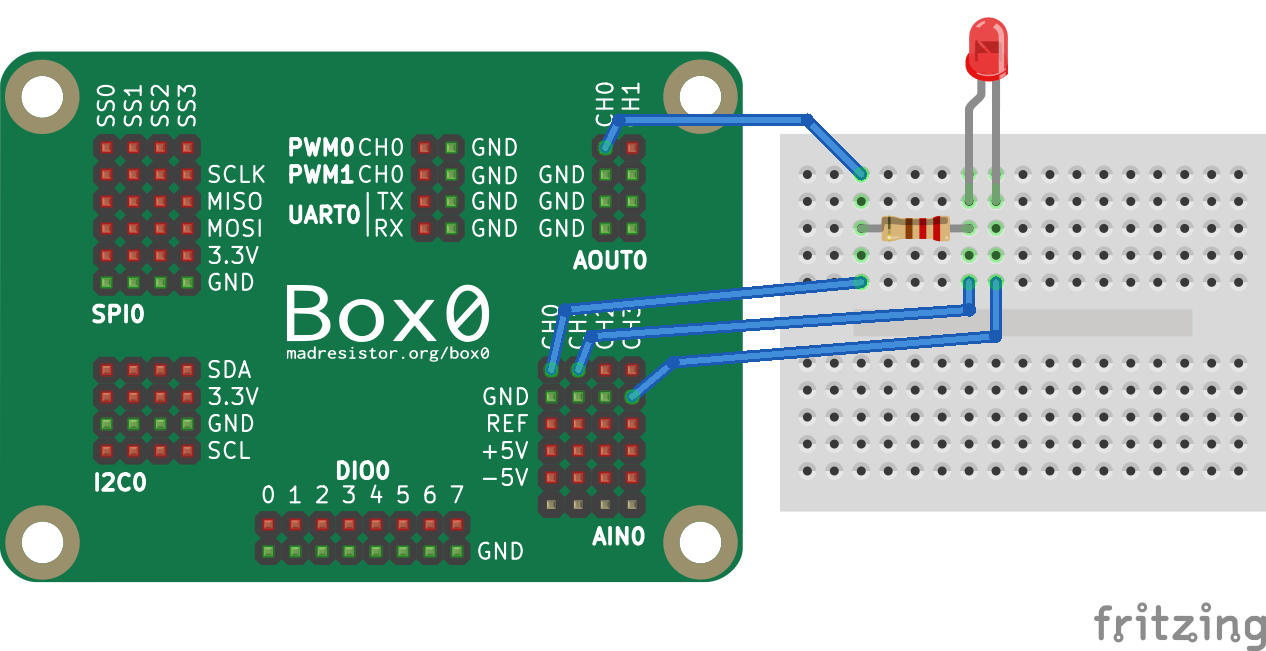In [1]:
%matplotlib inline
In [18]:
import box0
import numpy as np
import matplotlib.pyplot as plt
# allocate the appropriate resources
dev = box0.usb.open_supported()
ain0 = dev.ain()
aout0 = dev.aout()
# prepare AIN0
ain0.snapshot_prepare()
ain0.chan_seq_set([0, 1])
ain0.bitsize_speed_set(12, 100000)
# prepare AOUT0
aout0.snapshot_prepare()
# generate voltage, read voltage, calculate current and store the result
# AIN0.CH0 = AOUT0.CH0 = generated signal
# AIN0.CH1 = voltage across LED
# current = (AIN0.CH0 - AIN0.CH1) / R1 (where R1 = 320)
R1 = 320.0
SAMPLES = 100
x = np.empty(SAMPLES)
y = np.empty(SAMPLES)
voltages = np.linspace(0.0, 3.3, SAMPLES)
aout0_running = False
for i in range(SAMPLES):
if aout0_running:
aout0.snapshot_stop()
# output "v" value on AOUT0.CH0
aout0.snapshot_start(voltages[i:(i+1)])
aout0_running = True
# read back AIN0.CH0 and AIN0.CH1
readed_data = np.empty(SAMPLES)
ain0.snapshot_start(readed_data)
# do the calculation
ch0 = np.mean(readed_data[0::2])
ch1 = np.mean(readed_data[1::2]) # = voltage across LED
current = (ch0 - ch1)/R1
# store the result
x[i] = ch1
y[i] = current
# stop if AOUT0 running
if aout0_running:
aout0.snapshot_stop()
# close the resources
ain0.close()
aout0.close()
dev.close()
# now, plot the data
plt.xlabel('Voltage (V)')
plt.ylabel('Current (mA)')
plt.grid(True)
plt.plot(x, y*1000, 'r.-')
plt.show()
TODO
- do caliberation (the graph is showing Uncaliberated Result, current decrease as voltage increase till knee point)
